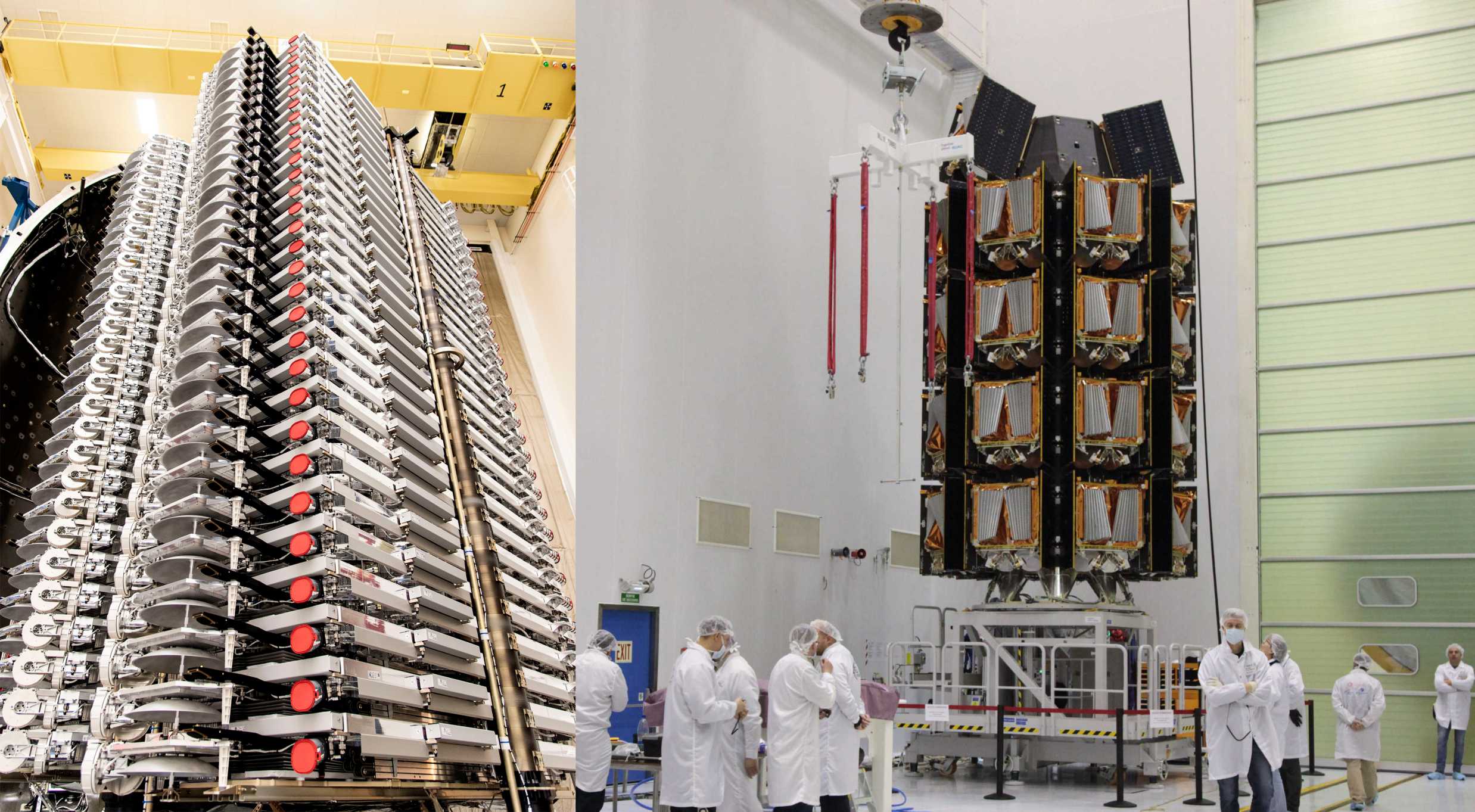

News
SpaceX's main Starlink constellation competitor is running out of money
OneWeb, the only pressing competitor facing SpaceX’s Starlink satellite internet constellation, has reportedly begun to consider filing for bankruptcy shortly before the London-based company completed its third dedicated launch.
Following the completion of its first full 34-satellite launch with a Russian Soyuz rocket on February 7th, OneWeb managed to complete a second launch on March 22nd just a few days after Bloomberg revealed its bankruptcy concerns. OneWeb now has 74 ~150-kg (330 lb) satellites in orbit – roughly 11% of its initial 650-satellite constellation. Like SpaceX, OneWeb’s goal is to manufacture and launch an unprecedented number of high-performance small satellites for a per-spacecraft cost that would have previously been inconceivable.
SpaceX’s Starlink, OneWeb, Telesat, Amazon Project Kuiper, and other prospective low Earth orbit (LEO) communications constellations all aim to provide high-speed, low-latency internet services to users almost anywhere on the surface of Earth. First and foremost, those constellations would seek to provide service to those who want broadband internet but have yet to be connected through traditional ground-based means by existing internet service providers (ISPs) that are either unable or unwilling to do so. Simply put, that is not an easy goal and OneWeb now appears to be heading towards sunset despite the wealth of resources it at one point possessed.
Requiring numerous revolutions in satellite manufacturing, antenna production, and launch vehicle affordability, as well as a vast and complex network of ground terminals, numerous companies have tried and failed to rise to the challenge over the decades. Original Globalstar, Teledesic, and Iridium constellations all raised more than $10 billion in the 1990s under the promise of blanketing the Earth with internet from space. All wound up bankrupt at one point or another.
Globalstar eventually completed an operational constellation, as did Iridium. Piggybacking off of many painful lessons-learned, Iridium even managed to become profitable, stable, and sustainable enough to fund an entirely new replacement constellation, launched on eight SpaceX Falcon 9 missions and completed in January 2019.
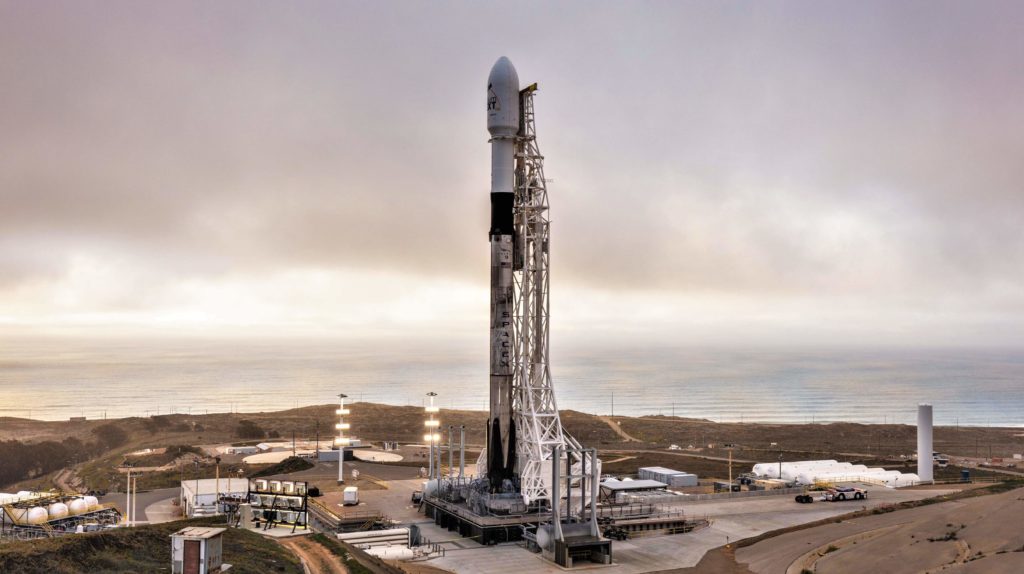
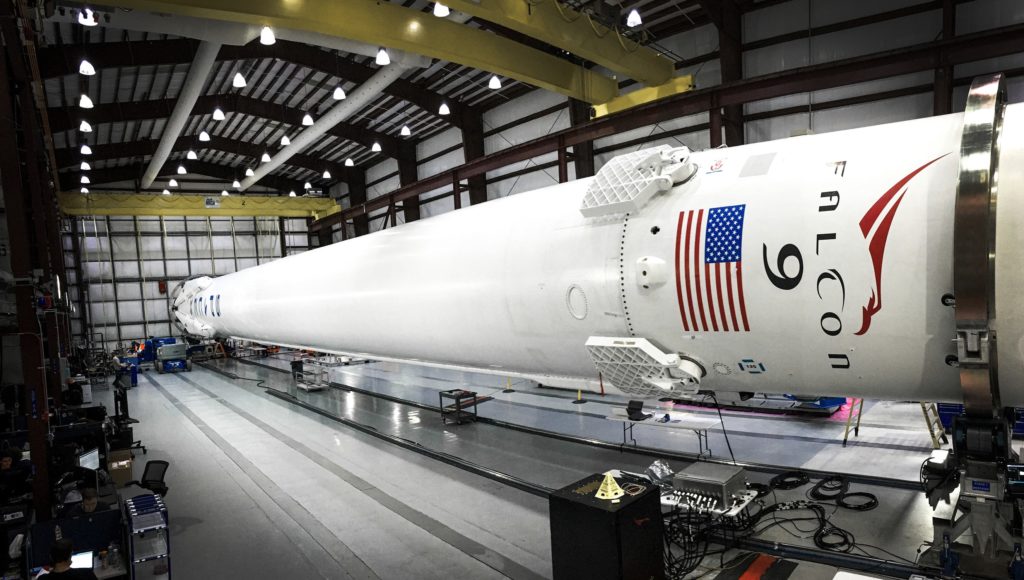
Short of a miracle, especially given the imminent economic catastrophe now facing much of the world, OneWeb appears to be close to becoming the latest body on a very tall pile. As if OneWeb learned nothing from the fates of those that came before, it has somehow managed to run out of money (or nearly so) despite having raised more than $3.4 billion in just four years. How OneWeb managed to turn $3.4 billion into a single factory and ~75 satellites in orbit is undoubtedly a mystery worth demystifying but for now, all that’s known is that the company is concerned about coronavirus impacts and anticipates imminent layoffs on top of future launch and production delays.
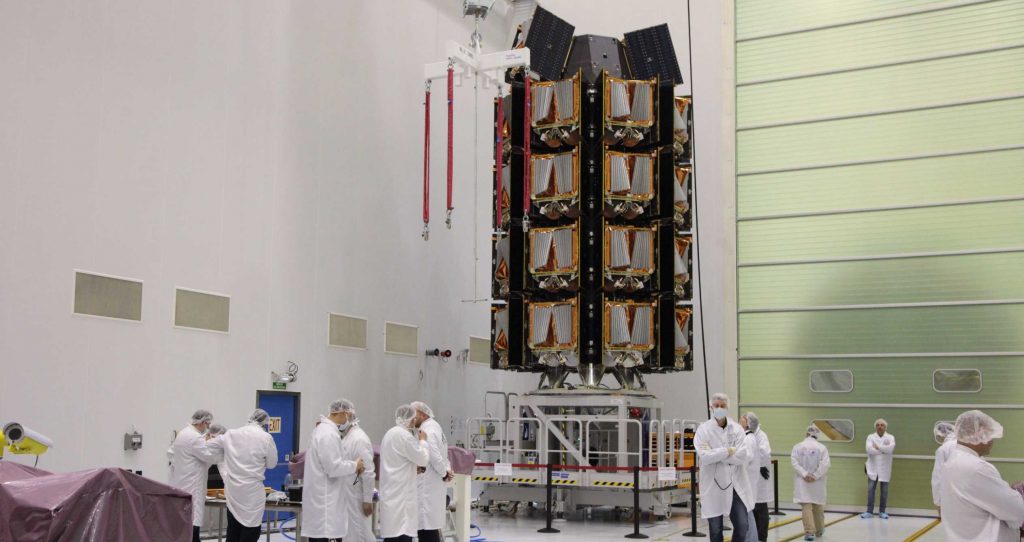
Ever the lone wolf, SpaceX forges ahead
Speaking earlier this month at the SATELLITE 2020 conference, SpaceX CEO Elon Musk frankly noted that Starlink – SpaceX’s exceptionally ambitious entrant to the LEO satellite internet race – was a work in progress with a real chance of failure. He made it clear that he was aware the constellation is now navigating a graveyard that has brought numerous companies with far more funding to their knees – now possibly including OneWeb. Nevertheless, SpaceX has shown no signs of slowing down. It’s possible – if not all but guaranteed – that the company’s Redmond, Washington-based has already been severely impacted by the coronovirus pandemic, given that the state is one of the US epicenters.
The company’s Los Angeles rocket factory is also likely to begin to experience major impacts as the city starts to take pandemic-related threats seriously. SpaceX’s Florida launch facilities and Texas Starship factory and development facilities are much less likely to be harmed in the interim. It’s another question entirely whether continuing to operate large factories and facilities is the right thing to do for SpaceX’s employees and the regions they reside in, whether states intervene or governments govern.
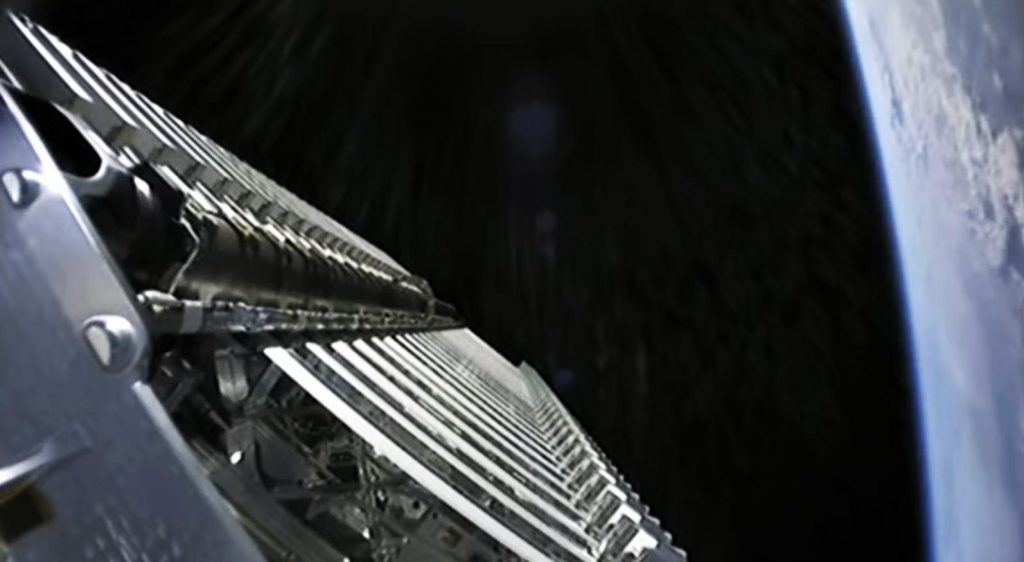
Nevertheless, thanks to the fact that SpaceX’s Washington factory has been building satellites 50% faster than it can launch them, it’s likely that at least one or two (if not several) launches worth of Starlink satellites are stockpiled and waiting to fly. The company’s next Starlink mission (Starlink L7 or V1 L6) is expected to launch no earlier than (NET) April 2020. The global pandemic could potentially create some open space in the company’s near-term manifest, but it could just as easily make SpaceX’s US launch activities next to impossible.
SpaceX has already delivered 360 Starlink satellites to orbit, 300 of which were launched in the last four months alone and all but ~10 of which are believed to still be operational. Barring increasingly likely delays from the growing pandemic, SpaceX anticipated it could have enough spacecraft in orbit (~500-600 satellites) to begin serving internet to customers in Canada and the northern US as early as this summer. For now, we’ll have to wait and see how things shake out in the coming weeks.
Check out Teslarati’s Marketplace! We offer Tesla accessories, including for the Tesla Cybertruck and Tesla Model 3.
Elon Musk
Tesla investors will be shocked by Jim Cramer’s latest assessment
Jim Cramer is now speaking positively about Tesla, especially in terms of its Robotaxi performance and its perception as a company.

Tesla investors will be shocked by analyst Jim Cramer’s latest assessment of the company.
When it comes to Tesla analysts, many of them are consistent. The bulls usually stay the bulls, and the bears usually stay the bears. The notable analysts on each side are Dan Ives and Adam Jonas for the bulls, and Gordon Johnson for the bears.
Jim Cramer is one analyst who does not necessarily fit this mold. Cramer, who hosts CNBC’s Mad Money, has switched his opinion on Tesla stock (NASDAQ: TSLA) many times.
He has been bullish, like he was when he said the stock was a “sleeping giant” two years ago, and he has been bearish, like he was when he said there was “nothing magnificent” about the company just a few months ago.
Now, he is back to being a bull.
Cramer’s comments were related to two key points: how NVIDIA CEO Jensen Huang describes Tesla after working closely with the Company through their transactions, and how it is not a car company, as well as the recent launch of the Robotaxi fleet.
Jensen Huang’s Tesla Narrative
Cramer says that the narrative on quarterly and annual deliveries is overblown, and those who continue to worry about Tesla’s performance on that metric are misled.
“It’s not a car company,” he said.
He went on to say that people like Huang speak highly of Tesla, and that should be enough to deter any true skepticism:
“I believe what Musk says cause Musk is working with Jensen and Jensen’s telling me what’s happening on the other side is pretty amazing.”
Tesla self-driving development gets huge compliment from NVIDIA CEO
Robotaxi Launch
Many media outlets are being extremely negative regarding the early rollout of Tesla’s Robotaxi platform in Austin, Texas.
There have been a handful of small issues, but nothing significant. Cramer says that humans make mistakes in vehicles too, yet, when Tesla’s test phase of the Robotaxi does it, it’s front page news and needs to be magnified.
He said:
“Look, I mean, drivers make mistakes all the time. Why should we hold Tesla to a standard where there can be no mistakes?”
It’s refreshing to hear Cramer speak logically about the Robotaxi fleet, as Tesla has taken every measure to ensure there are no mishaps. There are safety monitors in the passenger seat, and the area of travel is limited, confined to a small number of people.
Tesla is still improving and hopes to remove teleoperators and safety monitors slowly, as CEO Elon Musk said more freedom could be granted within one or two months.
News
Tesla launches ultra-fast V4 Superchargers in China for the first time
Tesla has V4 Superchargers rolling out in China for the first time.

Tesla already has nearly 12,000 Supercharger piles across mainland China. However, the company just initiated the rollout of the ultra-fast V4 Superchargers in China for the first time, bringing its quick-charging piles to the country for the first time since their launch last year.
The first batch of V4 Superchargers is now officially up and running in China, the company announced in a post on Chinese social media outlet Weibo today.
The company said in the post:
“The first batch of Tesla V4 Superchargers are online. Covering more service areas, high-speed charging is more convenient, and six-layer powerful protection such as rain and waterproof makes charging very safe. Simultaneously open to non-Tesla vehicles, and other brands of vehicles can also be charged. There are more than 70,000 Tesla Superchargers worldwide. The charging network layout covers 100% of the provincial capitals and municipalities in mainland China. More V4 Superchargers will be put into use across the country. Optimize the charging experience and improve energy replenishment efficiency. Tesla will accompany you to the mountains, rivers, lakes, and seas with pure electricity!”
The first V4 Superchargers Tesla installed in China are available in four cities across the country: Shanghai, Zhejiang, Gansu, and Chongqing.

Credit: Tesla China
Tesla has over 70,000 Superchargers worldwide. It is the most expansive and robust EV charging network in the world. It’s the main reason why so many companies have chosen to adopt Tesla’s charging connector in North America and Europe.
In China, some EVs can use Tesla Superchargers as well.
The V4 Supercharger is capable of charging vehicles at speeds of up to 325kW for vehicles in North America. This equates to over 1,000 miles per hour of charging.
Elon Musk
Elon Musk hints at when Tesla could reduce Safety Monitors from Robotaxi
Tesla could be reducing Safety Monitors from Robotaxi within ‘a month or two,’ CEO Elon Musk says.

Elon Musk hinted at when Tesla could begin reducing Safety Monitors from its Robotaxis. Safety Monitors are Tesla employees who sit in the front passenger seat during the driverless rides, and are there to ensure safety for occupants during the earliest rides.
Tesla launched its Robotaxi fleet in Austin last Sunday, and after eight days, videos and reviews from those who have ridden in the driverless vehicles have shown that the suite is safe, accurate, and well coordinated. However, there have been a few hiccups, but nothing that has put anyone’s safety in danger.
A vast majority — close to all of the rides — at least according to those who have ridden in the Robotaxi, have been performed without any real need for human intervention. We reported on what was the first intervention last week, as a Safety Monitor had to step in and stop the vehicle in a strange interaction with a UPS truck.
Watch the first true Tesla Robotaxi intervention by safety monitor
The Tesla and UPS delivery truck were going for the same street parking space, and the Tesla began to turn into it. The UPS driver parallel parked into the spot, which was much smaller than his truck. It seemed to be more of an instance of human error instead of the Robotaxi making the wrong move. This is something that the driverless cars will have to deal with because humans are aggressive and sometimes make moves they should not.
The Safety Monitors have not been too active in the vehicles. After all, we’ve only seen that single instance of an intervention. There was also an issue with the sun, when the Tesla braked abnormally due to the glare, but this was an instance where the car handled the scenario and proceeded normally.
With the Robotaxi fleet operating impressively, some are wondering when Tesla will begin scaling back both the Safety Monitors and Teleoperators that it is using to ensure safety with these early rides.
CEO Elon Musk answered the inquiry by stating, “As soon as we feel it is safe to do so. Probably within a month or two.”
As soon as we feel it is safe to do so.
Probably within a month or two. We continue to improve the Tesla AI with each mile driven.
— Elon Musk (@elonmusk) June 30, 2025
Musk’s response seems to confirm that there will be fewer Teleoperators and Safety Monitors in the coming months, but there will still be some within the fleet to ensure safety. Eventually, that number will get to zero.
Reaching a point where Tesla’s Robotaxi is driverless will be another significant milestone for the company and its path to fully autonomous ride-sharing.
Eventually, Tesla will roll out these capabilities to consumer-owned vehicles, offering them a path to generate revenue as their car operates autonomously and completes rides.
For now, Tesla is focusing on perfecting the area of Austin where it is currently offering driverless rides for just $4.20 to a small group of people.
-

 News5 days ago
News5 days agoTesla Robotaxi’s biggest challenge seems to be this one thing
-

 News2 weeks ago
News2 weeks agoTesla confirms massive hardware change for autonomy improvement
-

 Elon Musk2 weeks ago
Elon Musk2 weeks agoElon Musk slams Bloomberg’s shocking xAI cash burn claims
-

 News2 weeks ago
News2 weeks agoTesla features used to flunk 16-year-old’s driver license test
-

 News2 weeks ago
News2 weeks agoTesla China roars back with highest vehicle registrations this Q2 so far
-

 News2 weeks ago
News2 weeks agoTexas lawmakers urge Tesla to delay Austin robotaxi launch to September
-

 News2 weeks ago
News2 weeks agoTesla dominates Cars.com’s Made in America Index with clean sweep
-

 News2 weeks ago
News2 weeks agoTesla’s Grok integration will be more realistic with this cool feature





















